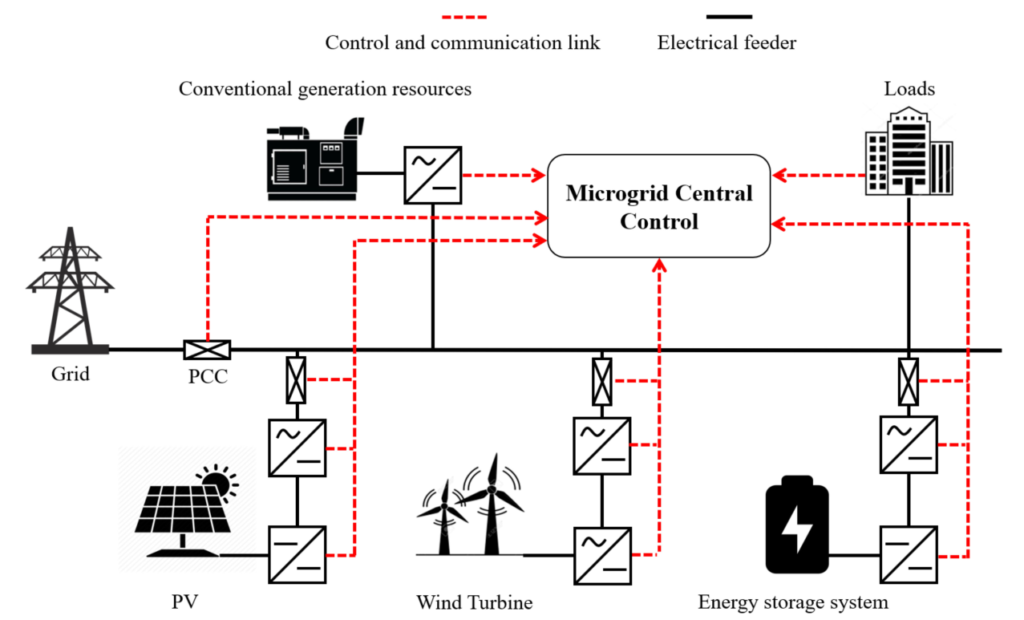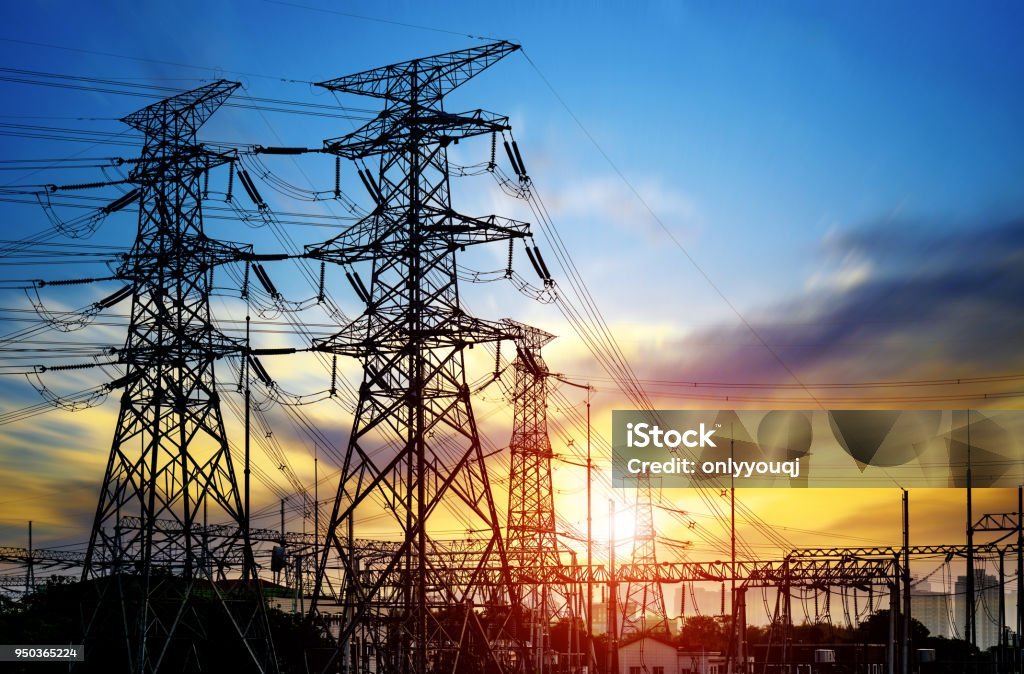Microgrids play a crucial role in the transition towards a low carbon future. By incorporating renewable energy sources, energy storage systems, and advanced control systems, microgrids help to reduce dependence on fossil fuels and promote the use of clean and sustainable energy sources. This not only helps to mitigate greenhouse gas emissions and reduce the impact of climate change but also provides a more resilient and secure energy supply for communities and businesses. Microgrids can also help to support the integration of renewable energy into the main electrical grid, promoting a more sustainable and efficient energy system overall. Thus, microgrids are an important tool in the efforts to create a low carbon future and a more sustainable energy system.
The world is moving towards a cleaner and more sustainable future. One way to achieve this is through the use of microgrids, which are small-scale power systems that can operate independently from the traditional grid. They allow communities, businesses, and even households to generate, store, and distribute their own energy, reducing dependence on fossil fuels and the traditional power grid. In this article, we will take a comprehensive look at microgrids, their benefits, how they work, and their future potential.
What is a Microgrid?
A microgrid is a local energy grid that can operate independently or in conjunction with the traditional power grid. It is comprised of multiple distributed energy resources (DERs), such as solar panels, wind turbines, energy storage systems, and traditional generators, that can generate, store, and distribute energy within a defined geographic area.
Microgrids are designed to be flexible and scalable, which means that they can be adapted to meet the energy needs of a variety of communities and businesses, from small rural villages to large urban centers. They can be used to power individual homes, small communities, or entire neighborhoods, and can be customized to meet specific energy requirements.
How Microgrids Work
Microgrids typically consist of four main components: energy generation, energy storage, loads and energy management. The architecture of microgrid is given in Figure 1.

Figure 1: Architecture of microgrid (Source: https://doi.org/10.3390/su131910492)
[1] Energy Generation: Microgrids rely on a combination of renewable energy sources, such as solar and wind power, and traditional energy sources, such as diesel generators. The mix of energy sources depends on the specific energy needs and requirements of the microgrid.
[2] Energy Storage: Energy storage systems, such as batteries, are an important component of microgrids, allowing energy to be stored for times when it is not being generated. This helps to ensure a stable and reliable source of energy, even when renewable energy sources are not available.
[3] Energy Management: Microgrids need a system to manage the flow of energy, ensuring that energy is being used efficiently and effectively. This includes monitoring and controlling the mix of energy sources, as well as balancing the energy supply and demand.
[4] Loads: Loads refer to the electrical devices and systems that consume energy within the microgrid, such as homes, businesses, and public buildings. The management of loads is an important aspect of the operation of the microgrid, as it helps to ensure that energy is being used efficiently and effectively
Benefits of Microgrids
There are several benefits to using microgrids, including:
[1] Increased Reliability: Microgrids can provide a more reliable source of energy, as they can continue to operate even if the traditional power grid goes down. This is especially important for critical infrastructure such as hospitals, schools, and emergency services.
[2] Increased Energy Security: Microgrids can reduce dependence on fossil fuels and the traditional power grid, providing a more secure and stable energy supply. This is particularly important in areas with unstable or unreliable power grids, where power outages are common.
[3] Increased Energy Efficiency: Microgrids are designed to be energy efficient, using a combination of renewable energy sources and energy storage systems to reduce energy waste. This can lead to lower energy costs for consumers and a more sustainable energy future.
[4] Improved Energy Access: Microgrids can provide energy access to remote or underserved communities that are not connected to the traditional power grid. This can improve the quality of life for residents and increase economic opportunities in these areas.
[5] Increased Sustainability: Microgrids rely heavily on renewable energy sources, such as solar and wind power, reducing the use of fossil fuels and contributing to a more sustainable energy future.
[5] Decentralized Energy Generation: Microgrids allow for decentralized energy generation, which means that energy can be produced closer to where it is being used, reducing transmission losses and making the energy system more efficient.
Challenges and Opportunities in Microgrids
Microgrids are small-scale power systems that have the potential to revolutionize the way we generate, store, and distribute energy. They offer a flexible and scalable solution that can provide communities and businesses with a more reliable, efficient, and sustainable source of energy. However, despite their many benefits, the implementation of microgrids is not without challenges. In this article, we will explore some of the key challenges facing microgrids, as well as the opportunities for overcoming them.
[1] Cost and Funding Challenges: One of the biggest challenges facing microgrids is the cost of implementation. The upfront costs of building and installing a microgrid can be significant, making it difficult for communities and businesses with limited resources to take advantage of this technology. In addition, the costs of microgrids can vary greatly depending on the size, location, and energy needs of the community or business. To overcome this challenge, it will be important for governments, businesses, and investors to invest in microgrid technology, providing the funding and support needed for the development and implementation of microgrids. This could be in the form of grants, subsidies, or investment opportunities.
[2] Technical Challenges: Another challenge facing microgrids is the technical complexity of designing, building, and operating them. Microgrids require a sophisticated energy management system to ensure that energy is being used efficiently and effectively, and that the flow of energy is balanced between generation and storage. In addition, microgrids must be designed to be flexible and scalable, able to adapt to changing energy needs and requirements. To overcome these technical challenges, it will be important for engineers, technologists, and energy experts to work together to develop and implement effective energy management systems and to ensure that microgrids are flexible and scalable.
[3] Regulatory Challenges: The regulatory framework for microgrids is also a challenge, as many countries have limited or outdated regulations that do not take into account the unique needs and requirements of microgrids. This can make it difficult for communities and businesses to implement and operate microgrids, as they may be subject to legal restrictions. To overcome this challenge, it will be important for governments to develop and implement regulations that support the growth and development of microgrids, while ensuring that they are safe, reliable, and sustainable. This could include regulations that promote the use of renewable energy, promote energy efficiency, and encourage investment in microgrid technology.
Opportunities for Overcoming Challenges
Despite the challenges facing microgrids, there are also many opportunities for overcoming these challenges and advancing this technology. One of the biggest opportunities is the continued growth and improvement of renewable energy technology, which is making it easier and more cost-effective to implement microgrids.
In addition, there is a growing interest in microgrids from businesses and investors, who are recognizing the benefits of this technology and investing in its development and implementation. This investment will help to overcome the cost and funding challenges, and provide the resources needed for the continued growth and improvement of microgrid technology.
Another opportunity is the development of new energy management systems and technologies, which will make it easier and more efficient to operate and manage microgrids. This will help to overcome the technical challenges, and ensure that microgrids are able to provide a reliable, efficient, and sustainable source of energy.
Future Potential of Microgrids
The future potential of microgrids is huge, as they offer a flexible, efficient, and sustainable alternative to the traditional power grid. As renewable energy technology continues to improve, the use of microgrids will become increasingly widespread, providing communities and businesses with a more reliable and secure energy supply. In addition, microgrids have the potential to help address energy poverty and provide energy access to remote and underserved communities, contributing to economic growth and improving the quality of life for residents.
In conclusion, microgrids are a promising technology that can provide communities and businesses with a more reliable, efficient, and sustainable source of energy. As the world moves towards a more sustainable future, the use of microgrids will become increasingly important. They offer a flexible and scalable solution that can meet the energy needs of a wide range of communities and businesses, from small rural villages to large urban centers. With the continued growth and improvement of renewable energy technology, the future potential of microgrids is vast, and they have the potential to play a significant role in shaping a more sustainable and equitable energy future.
The Power Electronics Group of the Electrical Department at IIT Madras, under the direction of Prof. Krishna Vasudevan, conducts active research in the field of microgrids. The research focuses on decentralized control of distributed energy resources, integration of energy storage systems, control of power quality through harmonic elimination, and protection schemes. To learn more about the research, it is recommended to read the latest publications (https://ieeexplore.ieee.org/author/37293260600)
Author – Amrutha Haridas, Project Officer, IGCS Research Programme on Sustainable Power Engineering – Phase II, Dept. of Electrical Engineering, IIT Madras



